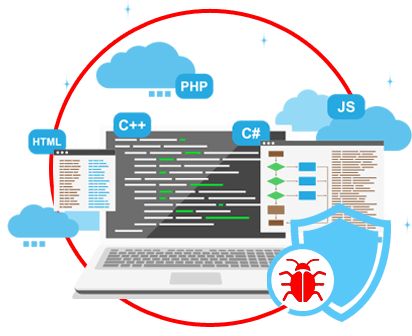Red Teaming Services Features
Features
What Do We Test in Red Teaming?
A red teaming exercise can be thought of as a compilation of our core services into one formidable package. Our team follows a vulnerability through from discovery and exploitation, through to the detection and mitigation capabilities of your security architecture. Tasked with gaining access to critical assets on your network, it provides you with the opportunity to test fully your company's ability to detect, protect, and respond efficiently to an attack.
In order to execute the work for the client (which is essentially launching various types and kinds of cyberattacks at their lines of defense), the Red Team must first conduct an assessment. By doing this, team members can get a broad overview of the organization's IT and network infrastructures by taking the mindset of a real cyberattacker. In particular, all of the associated tangible/intangible items are closely examined thoroughly, including the following:
Digital assets
Physical assets
Technical processes
Operational processes
What gets exposed by Red Teaming?
- If the business entity were to be impacted by a major cyberattack, what are the major repercussions that could be experienced?
- Will there be long periods of downtime?
- What kinds of impacts will be felt by the organization, from both a reputational and financial perspective?
- Do all of the abovementioned assets and processes rely on some sort of common infrastructure in which they are all joined together? 5. What are the most valuable assets and processes that can be easily compromised?

What are various ways of Red Teaming?

Email and Telephony-Based Social Engineering
This is typically the first "hook" that is used to gain some sort of entry into the business or corporation, and from there, discover any other backdoors that might be unknowingly open to the outside world. In these instances, phishing emails and social engineering style of attacks are launched. One of the primary objectives here is to hijack any and/or all of the username and password combinations that are possible to obtain in order to make the first severe crack in the defense perimeter.
Network Exploitation
Weaknesses here include both the servers and the network traffic that flows between all of them. The most vulnerable ones here (and which the Red Team will take full advantage) are those assets that have not been patched, or which have been completely misconfigured
Physical Security bypass
The Red Team is trying to find any weaknesses that can be exploited at the physical premises of the business or the corporation. For instance, do employees often let others in without having their credentials examined first? Are there any areas inside the organization that just use one layer of security which can be easily broken into? If the data center inside the organization utilizes multiple entry points, what is the lag time in between the opening and closing of these doors? (In other words, is there hypothetically enough time for an impostor to get through without having to use any kind of fake or stolen credentials?)
Exploiting Applications :
This typically involves the Red Team going after Web-based applications (which are usually the back-end items, mainly the databases) and quickly determining the vulnerabilities and the weaknesses that lie within them. Once these are discovered, the typical threat vectors to be launched are those SQL injection attacks, cross-site scripting attacks, cross-site request forgery attacks and similar.

What Our Customers Say?
Valency Networks is a very techie company, focusing on a continuous improvement in service quality. Our customers like us exactly for that and that helps us keep our quality to the best extent.




